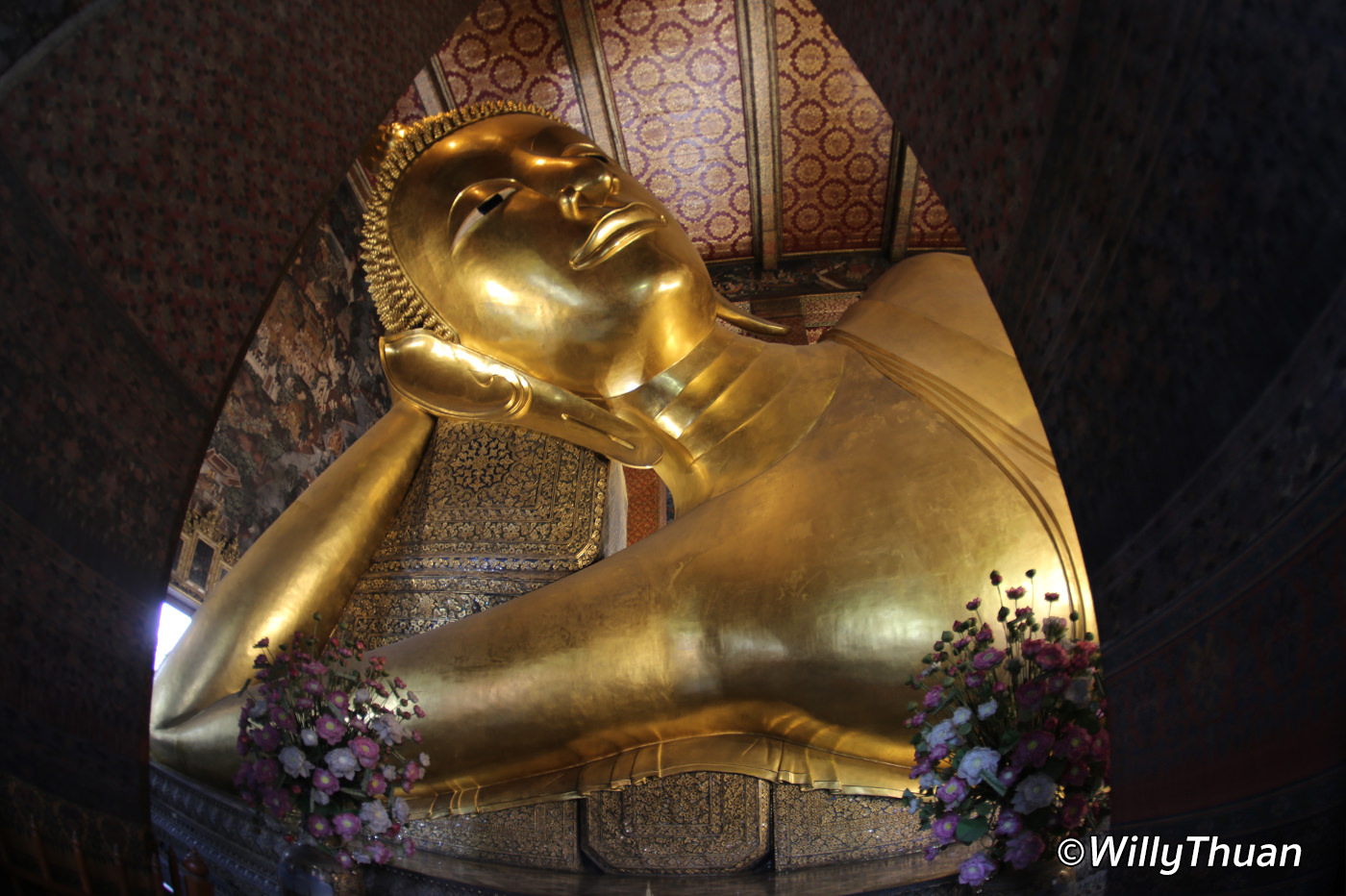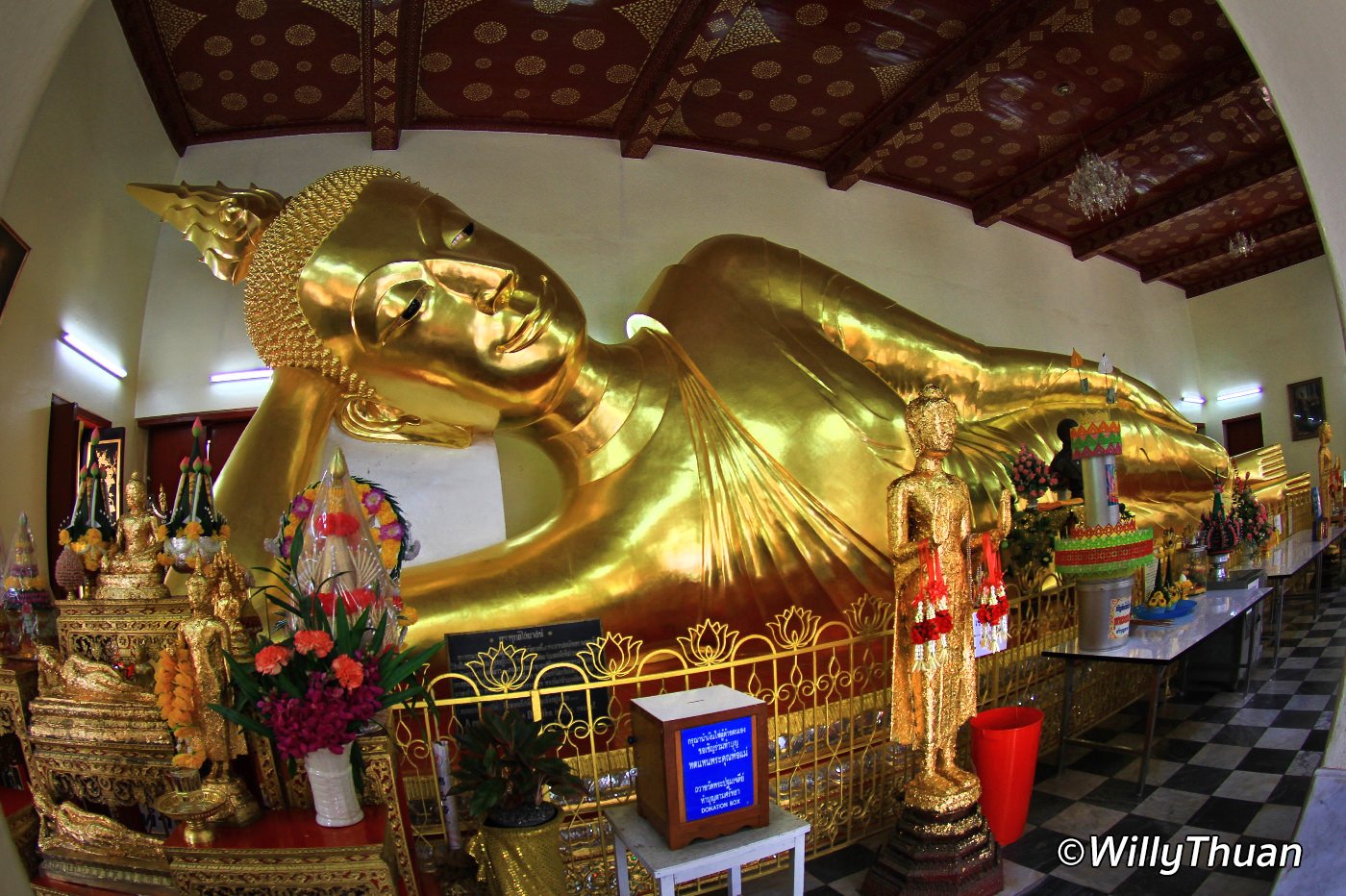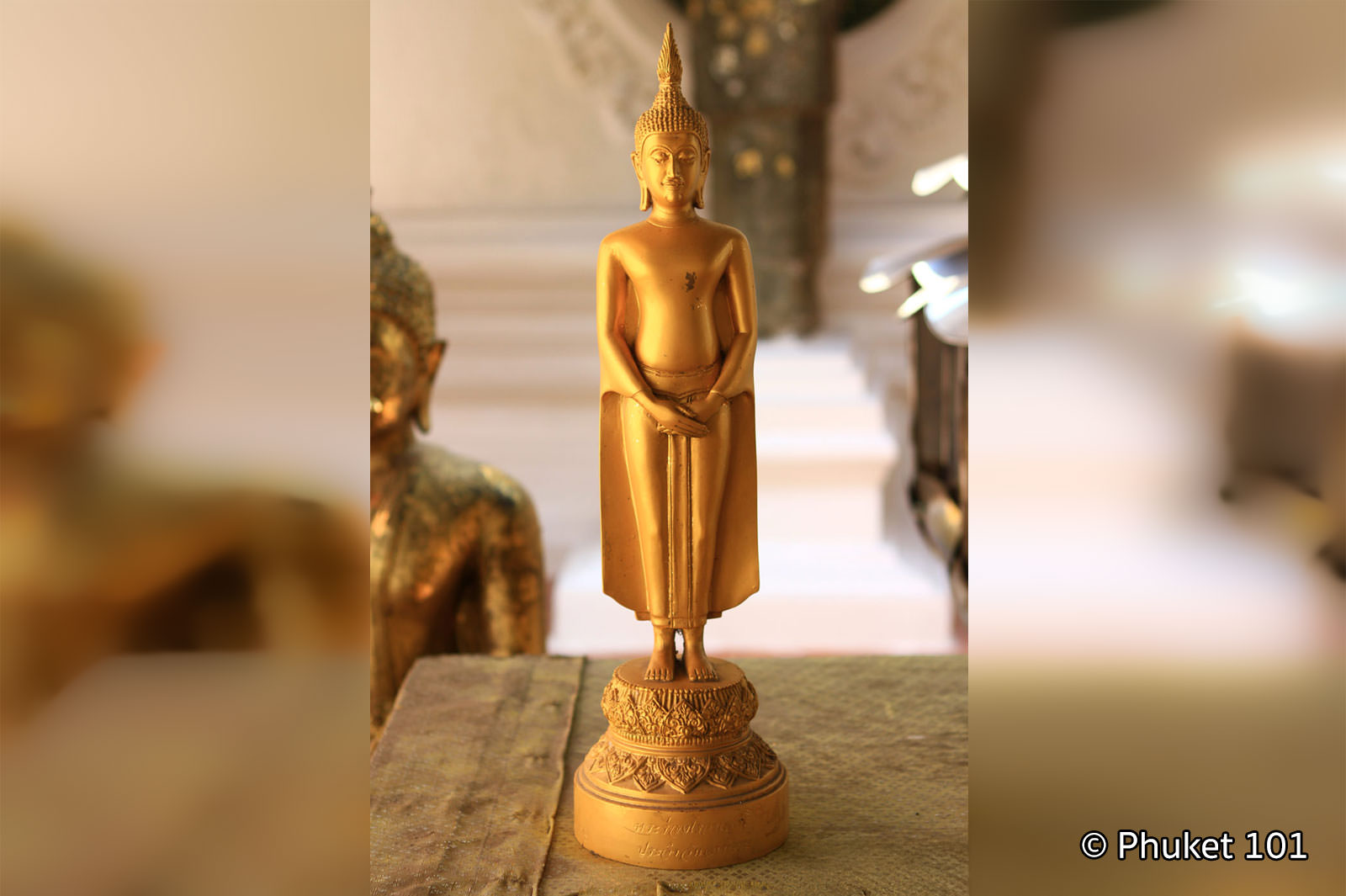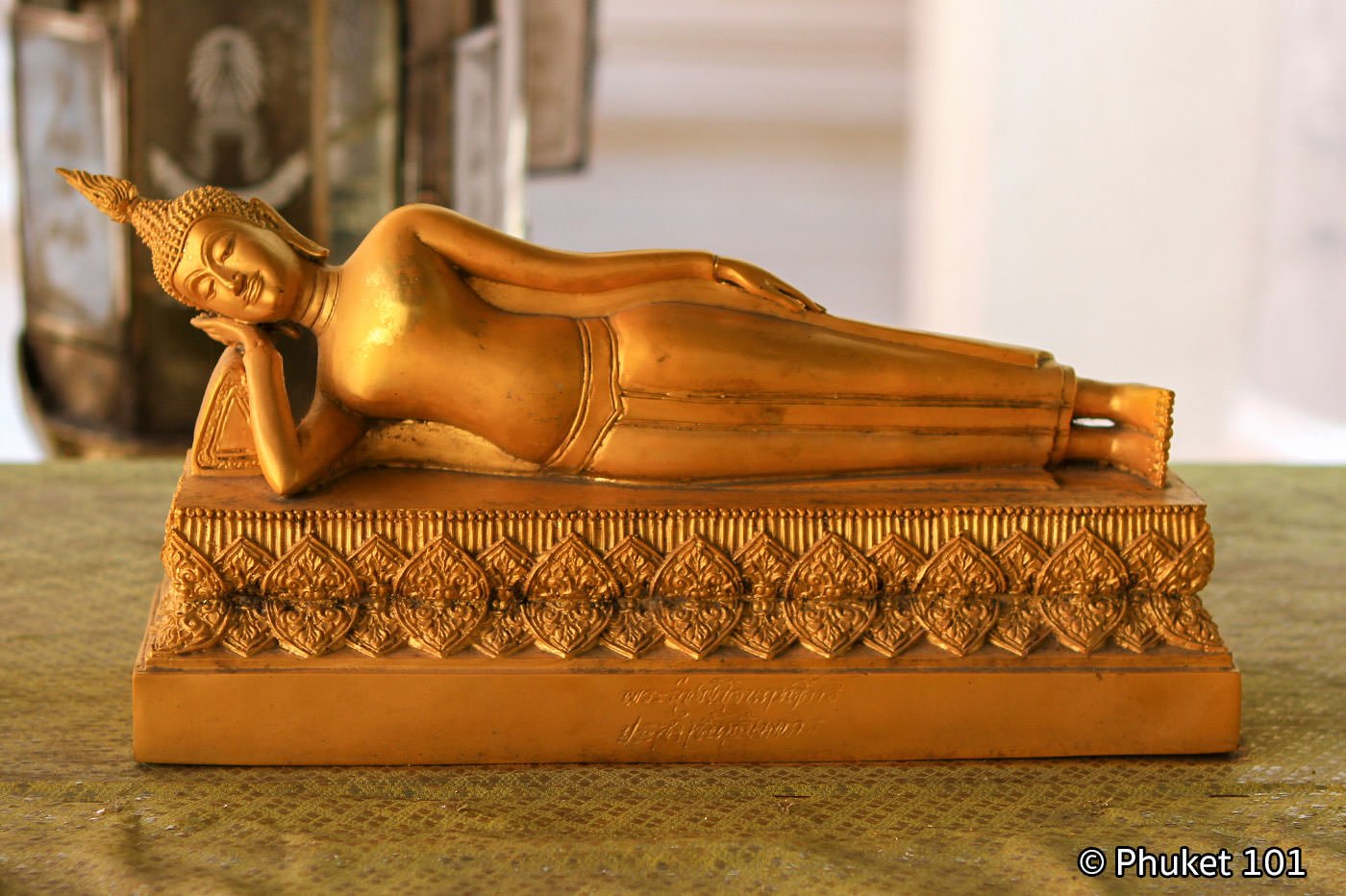In many Thai temples, visitors see Buddha statues shown in different postures for each day of the week. The Tuesday image is the Reclining Buddha (Thai: Pang Sai Yat, ปางไสยาสน์). This posture is not about sleeping. It represents the Buddha’s final passing into Parinibbāna (final Nibbāna).
Word note: Parinibbāna: Nibbāna (often called “Nirvana” in English) means complete freedom from suffering and the cycle of rebirth. Parinibbāna is the final Nibbāna that occurs at death for someone fully awakened (like the Buddha).
This event is recorded in the Pāli Canon, in the Mahāparinibbāna Sutta. Many Buddhists remember it each year during Visakha Bucha (Vesak), which commemorates the Buddha’s birth, Awakening, and final passing.
The Posture and the Scene
The Reclining Buddha lies on the right side, head supported by the right hand or a cushion, with the left arm resting along the body. This is called the lion’s posture. The image shows calm awareness at the end of life, not sleep.
Where it happened
The Buddha passed away near Kusinārā (today Kushinagar, India), in a sal-grove of the Mallas, between twin sal trees. The posture recalls this scene from the Canon.
Canonical note: The event (the Buddha’s final passing) and key details of the final days are in the Pāli Canon. The statue style we see in temples is a later iconography that expresses that event visually.
The Final Teaching
Just before passing, the Buddha gave a short, clear teaching often called his final words: “All conditioned things are subject to decay. Strive on with heedfulness.”(Pāli: “vayadhammā saṅkhārā; appamādena sampādetha.”)
Word note: “heedfulness” (appamāda): being not careless, alert, and responsible in what you do. It means paying steady attention to what is wholesome and helpful.
Plain meaning: Everything that is made or born will change and end. Knowing this, live carefully and practice with steady attention.
Symbolism (for travellers)
- Impermanence: The posture is a reminder that life changes and ends.
- Composure: The Buddha’s calm face and right‑side posture show dignity and awareness at life’s final moment.
- Practice, not sleep: The image invites reflection and heedfulness (appamāda) rather than casual viewing.
Traditional Variation (Non‑canonical)
Some Thai accounts add a separate story: the Buddha reclines to humble the giant Rahu, who first refuses respect and later yields. This is not part of the Pāli Canon, but a later cultural narrative. It appears in temple teaching materials and local storytelling.
Right‑Side Norm (and a rare exception)
Almost all reclining Buddha images show the Buddha on his right side in the lion’s posture. A left‑side reclining image exists in some East Asian (especially Japanese) art traditions, but this is rare and not typical in Thai Theravāda imagery.
Where You’ll See It
Across Thailand: Larger temples often display a Reclining Buddha, and many temple courtyards group the seven (or eight, counting Wednesday night) day‑of‑week images with labels. Look for the Tuesday label next to the reclining figure.
Pilgrimage in India: At Kushinagar, visitors can see sites connected with the Buddha’s final passing remembered in local tradition.
Kushinagar Temple Photos
Quick Reference Snapshot
- English name: Reclining Buddha (final passing)
- Thai name: Pang Sai Yat (ปางไสยาสน์)
- Meaning: The Buddha’s Parinibbāna (final Nibbāna)
- Posture: Lying on the right side, right hand supporting the head; composed expression
- Scene: Near Kusinārā (Kushinagar), in a sal‑grove, between twin sal trees
- Final teaching: “All conditioned things are subject to decay. Strive on with heedfulness.” (Pāli: vayadhammā saṅkhārā; appamādena sampādetha)
- Tuesday link: Commonly labelled as the Tuesday posture in Thai temple sets
Closing Thought
The Tuesday posture reminds us that the Buddha’s last lesson was practical: nothing lasts, so use your time well. When you see a Reclining Buddha in Thailand, it is more than a famous statue. It is a picture of impermanence, calm awareness, and heedful practice at the very end of life.










